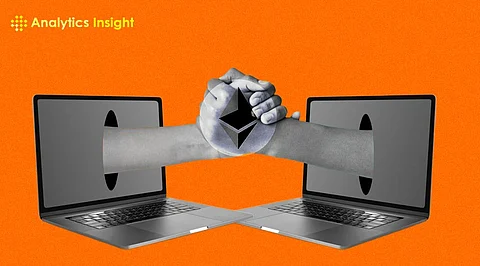
- Insights
- Cryptocurrencies
- Stocks
- White Papers
- Industry
- Geography
- Insights
- Cryptocurrencies
- Stocks
- White Papers
- Industry
- Geography


The business logic or protocol that drives every transaction on a blockchain is known as a smart contract. The main goal of a smart contract is to fulfill standard contractual requirements, such as minting its own Ethereum currency. We must create smart contracts that will govern how all of the token's computations are carried out.
It is a standalone script that is written in Solidity, compiled into JSON, and sent to a specific blockchain address. By providing the correct data and Ethereum to call the built and deployed Solidity function, we may execute a deployed smart contract at a specific address in a manner similar to how we can use a RESTful API's URL endpoint to perform some logic using a HttpRequest.
For a cost commensurate with the storage capacity of the contained code, smart contracts are added to the decentralized database. It may also be described as a group of codes that are kept on the blockchain network and specify terms that all parties to the contract must concur upon.
This is a detailed tutorial on using Solidity to create and implement Ethereum Smart Contracts.
MetaMask functions as a wallet and an Ethereum browser. It eliminates the need to download and install software in order to engage with dApps and smart contracts online. All you have to do is add the MetaMask Chrome Extension, set up a wallet, and send ether.
Although MetaMask is presently only compatible with the Google Chrome browser, Firefox compatibility is anticipated in the upcoming years. Before you begin developing smart contracts, download the MetaMask Chrome plugin.
You may import an existing wallet or create a new one after downloading and adding it as a Chrome extension. To implement an Ethereum smart contract on the network, you need to have some ethers in your Ethereum wallet.
Click on its symbol in the upper right corner of the browser window once it has been installed. It will open in a new browser tab when you click on it. To continue, click "Create Wallet" and select "I agree" to accept the terms and conditions. You'll be prompted to set a password.
It will email you a secret backup phrase that is used to backup and restore the account once you generate a password. This phrase can steal your ethers, therefore don't reveal it or share it with anybody.
The following test networks may also be present in your MetaMask wallet:
Robsten Test Network
Kovan Test Network
Rinkeby Test Network
Goerli Test Network
You need to have some fake ethers in your MetaMask wallet in order to test the smart contract. Click the "Deposit" and "Get Ether" buttons under Test Faucet to add fake ethers. You must select "request one ether from the faucet" in order to continue, and one ETH will be added to your wallet. To the test network, you may add as many ethers as you like.
To develop our Solidity code, we will utilize the Remix Browser IDE. Remix is the greatest choice for creating smart contracts since it provides a rich development experience and has a few features. Typically, it is employed in the drafting of minor contracts.
To generate a.sol extension file, open Remix Browser and click the add symbol next to the browser on the upper left corner.
A common template for ERC20 tokens is ERC20.sol.
Pressing the deploy button on the right side of the Remix window will enable the smart contract to be deployed on the Ethereum test network. Hold off until the transaction is finished. The address of the smart contract will be shown on the right side of the remix window upon a successful transaction commit.
Initially, the person implementing the smart contract will have all of the ERC20 tokens kept in their wallet. Go to the metamask window, select Add Tokens, enter the smart contract address, then click OK to view the tokens in your wallet. There, you would be able to check how many tokens there are.
